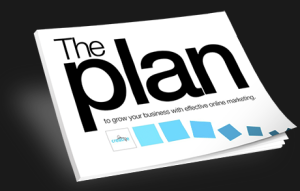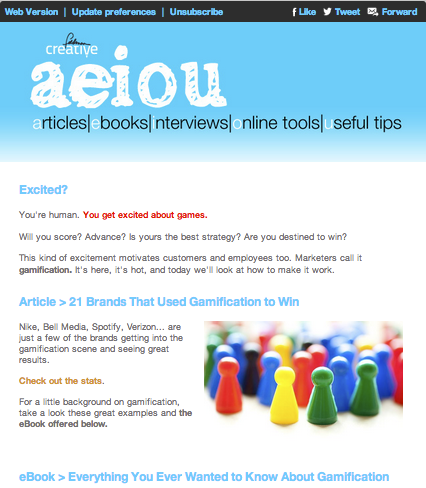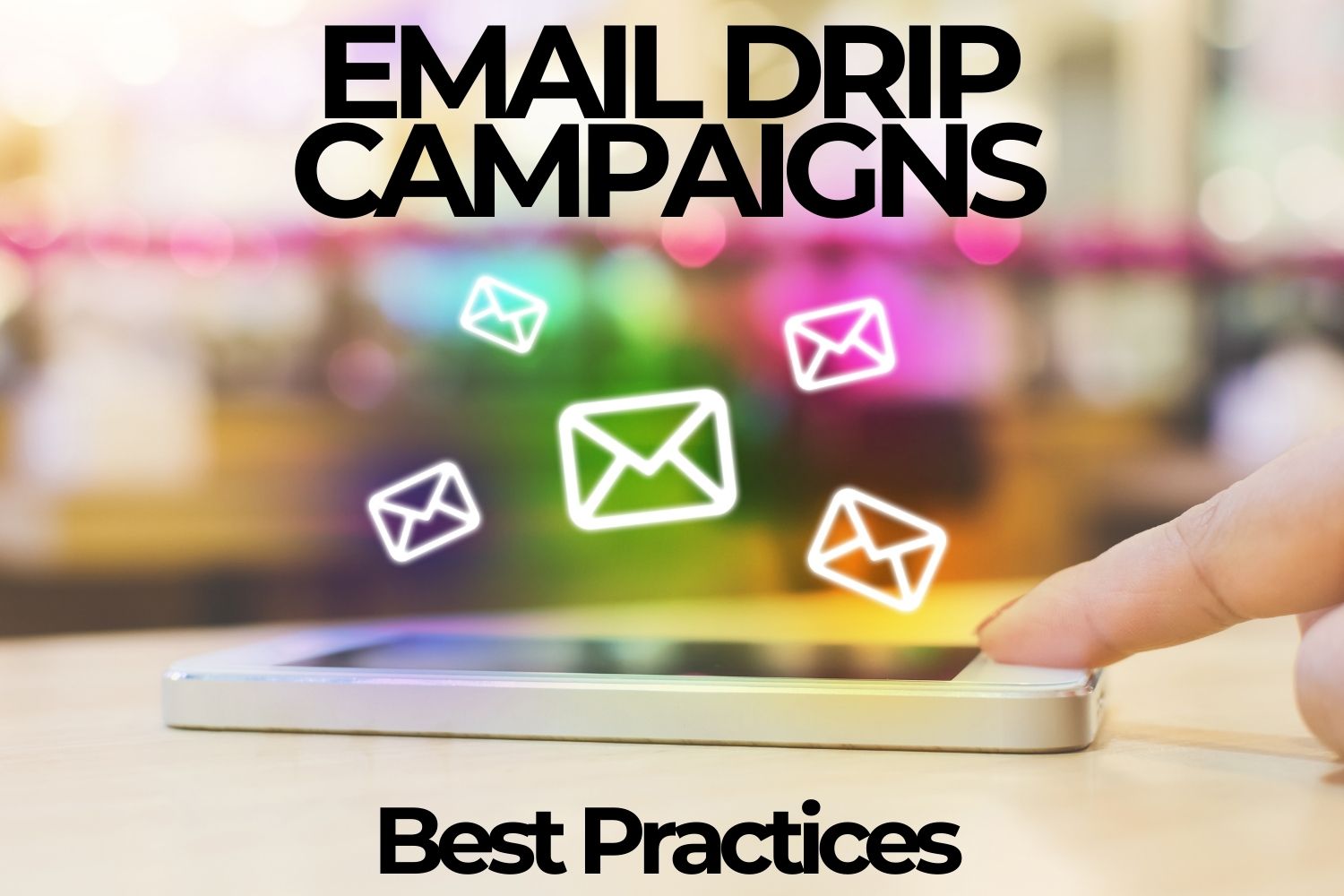I was recently interviewed by Adam Franklin of Blue Wire Media. It was a great conversation where I shared some of my experiences with landing guest posts on authority sites, calls to action and email marketing.
Transcript
Adam Franklin: Okay, hi, it’s Adam Franklin here, and I’m very lucky to be here with Barry Feldman. He is a content marketer who I have admired for a long time. He is the strategist, copywriter, and creative director at Feldman Creative, coming to us from California, and wearing a very trendy Feldman Creative hat. Thanks for joining us, Barry.
Barry Feldman: Thanks for having me, Adam. That was quite an introduction. I’m going to have to raise my price.
Adam Franklin: You are, absolutely. Well, you’re a very established copywriter and a person whose word craft I’ve seen popping up on all the major blogs for many months now, since I’ve been following you. One of the ones that really caught my attention was your guest blogging on Copyblogger. I’d really like to know, what was the process you followed to become a guest blogger for Copyblogger?
Barry Feldman: I wish I could tell you that it happened according to plan. As you know, a lot of opportunities that are guest blogs have a thing like ‘Write for us’, or some sort of application process that’s more or less formalized because we live in a content world and people want content, but Copyblogger doesn’t do that, they’re sort of on this upper echelon where they decide who writes for them. So I was a fan for much longer than I was a writer. So I followed Copyblogger, I love Copyblogger, I learned a lot from them, and the one time that I sort of campaigned to write for them I simply tried to figure out what peoples’ email addresses were. Like Brian Clark. It didn’t work, I think I got some sort of polite rejection letter that said ‘We ask writers that we admire to write for us’, so I gave that up for quite some time and just sort of played the game.
I think I caught that guest bloggers often do just try to look for unique and promising opportunities to get bigger audiences, new audiences, and along the way came Convince & Convert, Jay Baer’s Convince & Convert, which is a great, great blog. One day I got a tweet from Brian Clark saying, ‘I’d love to see something like that on Copyblogger’, and that was how it started. The conversation continued on Twitter for a while, when he followed me, and then it turned into email, and then I was invited to write for Copyblogger.
Calls to action
Adam Franklin: That’s fantastic. Now, it’s a huge audience when you’re writing for a blogger of the calibre of Copyblogger. What kind of call to action do you use to make the most of that audience?
Barry Feldman: Well, that’s definitely a tightrope act. If you make your article super-transparently self-serving, like ‘Click here for my stuff, click here for my stuff’, like it’s one big piece of link bait, such it’s that you’re thinking about your website first and their audience second, you’re not going to last long, so I didn’t do that. In fact, there’s an editing process such that most of their links are internal. Now they, in a lot of places they don’t object to you using relevant material. Then, they generally have different rules about the author box or biography that follows the piece. Companies handle that differently with the amount of promotional links they’ll allow, some have photographs and some don’t. In the case of Copyblogger, I played it conservative, and I allowed the links to be mostly theirs, and I think my favourite, or latest, or hottest eBook is mentioned in the author box. You know, ‘Barry is the author of The Plan to Grow your Business with Effective Online Marketing’. So that was very nice of them to publish that, and that’s sort of the payment they make in exchange for having a guest blogger, and I created a massive spike at the time those things ran it. It still creates traffic daily, really. So in the future if I write for them I might change the e-book, or the link that is more important to me, but that’s what they allowed and that’s what I did as the call to action, ‘If you want to know more about me, or read more of my writing that’s relevant to this story you just read, here’s an eBook for you’.
Adam Franklin: Yeah, that’s nice to know because obviously you don’t want to be spamming there. Obviously the guest blog post with links to your site, I was really keen to find out how having that call to action back a premium piece of your content seems like a tactic that good content marketers like yourself are following.
Linking back to your e-book
Barry Feldman: Yeah, and it’s gated, so if they do do that they’re not landing on the page that has the .pdf, they’re landing on the page that has the form. So I’ll learn who they are, and of course in my analytics I’ll learn that they came from Copyblogger, and then Copyblogger, like most, wants you to enjoy the SEO benefits you can get from writing for them, and the social benefits, so technically they allow you to make your Twitter address or LinkedIn address available. And then sometimes invisibly, you make your name a link with that tricky rel=’Author’ thing, you know what I’m talking about, with rel=’Author’, and basically that’s some code that allows you to basically make a link to your Google+ page. If you’re looking for a reason to have a Google+ page, that’s it right there, plus all of the other things that make Google+ great. But that allows your image to appear alongside the URL, the title tag, and the Meta description that explains the story. So all of that together, picture, headline, description, is a very compelling thing to see when you’re doing a search.
Adam Franklin: What sort of conversion rate offers, or number of people, might you attract from a guest blog post on a blog like that? In terms of conversions through that landing page?
Barry Feldman: Very, very high, the person that made it to the author box of a guest blog, first of all, read the story. Secondly, they said, ‘This guy can write’ or ‘This guy, or gal, is helpful’, so they’re at the bottom now, and they simply wouldn’t click there if they didn’t want to. That’s not to say there’s no leakage, you know, they get to the landing page and they got distracted or didn’t want to fill it out for one reason or another. But I would say the conversion rate from a high authority website like Copyblogger or Convince & Convert is 50% or higher, and in terms of numbers, that would be relative to the amount of traffic you get, and really where you stand in the website world, what kind of company you have. My company’s more or less a virtual agency, and it’s largely me, so a bad day, I suppose, might be 50 or 60 visits. These numbers go up over time, of course, based on the amount of things I’m doing. But now, a typical day is in the 200 to 300 range. Yesterday I made a debut on Hubspot, I got 300 to 400 hits on my site, and a quarter to half of them were thanks to Hubspot. The conversion rate was pretty good, I don’t think I had anything to say about an eBook or something else you should read there, but on Copyblogger I did, so the conversion rate’s really high. And the numbers, the actual head count, is probably not as important as the conversion rate.
Email marketing
Adam Franklin: So with the people that convert on your website, they then opt in, they give you their name and they give you their email address, they then go on to nurture those people through email marketing, don’t you?
Barry Feldman: Yeah, in a very modern soft-sell way, they do not get an email from me that says anything other than ‘thank you’ and ‘glad to have you’, and then in the future they get my newsletter, and I do two of those. I guess that might even be one of the first interactions you and I have had, because you mentioned that you like it. I do two: I have one called ‘Get Magnetic’ which is about all things online marketing, and it’s really, I guess I really have to admit this, without an editorial calendar. It’s the whim of the week when I decide to do it, and I do it about once a week. Maybe a little less often than that, like twice a month. And that’s because I have a curated email that I call ‘AEIOU’, and that features, generally speaking – there’s five vowels, right? Five links to five stories that I often didn’t write, I just discovered. A means Article, E means eBook, I is flexible, sometimes I is infographics and sometimes it’s interviews. O is an Online Tool, and U is a Useful Tip. So those links are sort of thematically based, it might be about Google+ this week, or it might be about guest blogging this week, or some sort of online marketing.
So I do those both, and that’s my lead-nurturing campaign. Because I have a reasonably steady flow of new content that’s gated, my email list grows pretty fast, especially with the guest blogging I’ve done. So I’ll capture several hundred new emails every week, and it’s understood that they’re opting in to get email from me. Initially what they were really asking for was an eBook, but they’re going to get email from me. Of course they can opt out when they want to, they generally don’t, and that list has really exploded in the last year. So I’ve gotten really serious about email marketing for about a year, and about a year ago, I probably had 1000 email list, and today I have over 3000, and it’s a snowball. If we do this next year, I’ll probably have over 30,000, I don’t know. But it grows in a very snowball effect sort of way. Wait, you don’t know about snowballs, you live in Australia, what am I talking about?
Adam Franklin: Oh, we get a few snowballs down south. Not too many. More fires at the moment. And Barry with your email marketing with the AEIOU content, have you noticed that there’s been a particular type of content that gets the highest click-through rate?
Click-throughs
Barry Feldman: No. I remember you were going to ask me that, and that’s my disappointing answer, in a way. I have a two part answer I want to tell you about, the second part occurred to me since you asked me that. I think if we were really getting nitpicky, and we said ‘These subject lines work better’, ‘These topics work better’, but I have to be smarter and more analytical than I am to figure that out. Because my open rates are awesome, my open rates are 20%-35%. They’re usually in-between, like 27%-28%, so how that compares to general emailers, I’d say it compares very favourably, it’s like three, four, five times as high. And then my click-through rates are about the same numbers. Sometimes I’m shocked, I did one about my whole collection of eBooks, and it had about a 40% click-through rate, so it sort of depends on the ‘freebies’ I suppose, but I generally do them at the same time, and I generally do subject line test them, and I learn a little, and I have lessons.
We were talking specifically about email today that I could give and apply to email newsletters, and how to handle them, but I haven’t figure out like ‘This subject’s weak’ and ‘this subject’s strong’, because my focus, while it’s not laser-focus, is, it’s online marketing. You opted in because it’s online marketing, and that covers four or five or six subjects: Writing, blogging, webpage design and creation and writing, landing pages, email, social media, and not much more. So there hasn’t been any duds at all, really, in terms of letting me down and going ‘Ooh, that was a mistake’.
Every once in a while, like with AEIOU, it’s sort of thematic, so I go ‘This issue’s about Twitter’ or ‘This issue’s about Google+’, and those are the riskiest of all because you might read it and go ‘I don’t care about Twitter or Google+’, but I haven’t really suffered that consequence. I have a very good read on what my readers want to learn about, and then secondly, I’m thinking about writing a piece about this. I think most people attribute the metrics that would be considered important to email, like open rate and click-through rates, they trace that to subject line, the timing, various things.
But what I think is more important than all of those things is it traces to the authority or trust that you have with the person that it’s coming from. So before the subject line, it says ‘It’s from Adam Franklin. It’s from Barry Feldman. It’s from Company X’. Well, that is not an easy thing to put your finger on, but that’s something you have to earn. So there are emails that I automatically open, like Copyblogger, because I’m not going to be disappointed with what I find.
So that’s what I think it takes, you know, kind of ‘sweat equity’, you have to be useful, helpful, creative, consistent, and then your email is going to get opened. It’s not to say that subject line doesn’t matter, timing doesn’t matter, your email provider, the topic matter, but more importantly I think, it’s, ‘Is this person a friend of mine? Am I going to see something here that’s going to help me?’
Subject lines
Adam Franklin: Yeah I totally agree with you there, Barry. I mean, certainly subject lines are important, but mostly it’s due to the trust and who’s actually sending it and them knowing that they’re going to get something decent and interesting, and that’s been one of the major reasons I’ve been opening yours since I’ve been receiving them this year. I love them, there’s always something, I know when I open it there’s always going to be something there that I find valuable, and I trust you.
Barry Feldman: Yeah, good to hear, and that’s what I want to hear. Trust. Like if I say, ‘This next one’s about Snapchat’, kind of topical and timely, and you go, ‘I don’t care about Snapchat…’ or ‘I never heard of…’, you kind of go, ‘Well, Barry says I should read about it, maybe that’s meaningful’, and I guess in the case of an open rate, that’s in the 25% to 35% range, that is in fact what’s happening.
Adam Franklin: Barry, thank you so much for your insights today, where can our down under viewers go to find out more about you and your organisation?
Barry Feldman: Well, I have not set up a website specifically for Australians. But our down underers and everybody can go to Feldmancreative.com and my blog is simply followed by /blog. Boy, if you read about online marketing, your space is going to be invaded by me. Starting tomorrow, I’m a columnist on Social Media Today, I just recently started writing for HubSpot. I write monthly for MarketingProfs, and Convince & Convert, and I’ve collected all of that goo into a page on my website that says ‘This is where Barry guest blogs’. So that’s for the convenience of readers that might want to subscribe or do the RSS thing.
Adam Franklin: Thank you so much. I’ve been seeing your name all over the web, I’ve love all the articles, and thank you so much for taking the time to join me today.
Barry Feldman: All right, awesome Adam. Thanks for inviting me here, and I hope your audience got something from it.
Adam Franklin: Absolutely. Thank you.
Barry Feldman: Bye.









![Business Blogging Trends – 4th Annual Survey [Content Jam Episode 36] Business Blogging Trends – 4th Annual Survey [Content Jam Episode 36]](https://feldmancreative.com/wp-content/uploads/2018/10/Content-Jam-podcast-36.jpg)